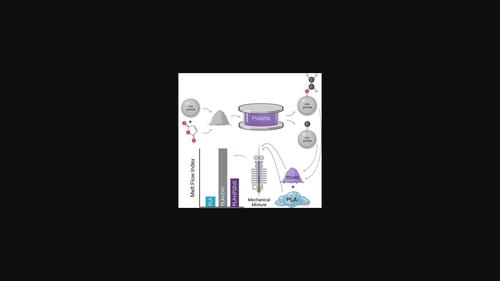利用等离子处理法用马来酸酐修饰氧化锌表面
IF 2.9
3区 物理与天体物理
Q2 PHYSICS, APPLIED
引用次数: 0
摘要
以固态马来酸酐(MA)为官能化剂,用氩等离子体对氧化锌(ZnO)进行了 5 分钟和 15 分钟的表面处理。通过 X 射线光电子能谱、傅立叶变换红外光谱和热重分析对样品进行了表征。结果表明,氧化锌表面改性主要通过两种途径进行:MA 的分解和等离子体诱导的 C-Zn 键的形成,其中 15 分钟是最有利的时间跨度。聚乳酸(PLA)和氧化锌在内腔混合器中进行处理,该混合器与扭矩流变仪相连,并通过熔体流动指数进行表征。含有经过处理的氧化锌的复合材料的流动指数更接近纯聚乳酸的流动指数,这表明官能化有助于控制聚合物基质的降解。本文章由计算机程序翻译,如有差异,请以英文原文为准。

ZnO surface modification with maleic anhydride using plasma treatment
Zinc oxide (ZnO) was surface treated using argon plasma at 5 and 15 min, using maleic anhydride (MA) in solid state as the functionalizing agent. The samples were characterized by X-ray photoelectron spectroscopy, Fourier-transform infrared spectroscopy, and thermogravimetric analysis. The results indicate that ZnO surface modification occurs through two main routes: the decomposition of MA and the plasma-induced formation of C–Zn bonds, with 15 min being the most favorable time span. Poly(lactic acid) (PLA) and ZnO were processed in an internal chamber mixer, which was coupled with a torque rheometer and characterized by the Melt Flow Index. Composites containing treated ZnO present fluidity indices closer to those of pure PLA, indicating the functionalization contribution to control the degradation of the polymer matrix.
求助全文
通过发布文献求助,成功后即可免费获取论文全文。
去求助
来源期刊

Plasma Processes and Polymers
物理-高分子科学
CiteScore
6.60
自引率
11.40%
发文量
150
审稿时长
3 months
期刊介绍:
Plasma Processes & Polymers focuses on the interdisciplinary field of low temperature plasma science, covering both experimental and theoretical aspects of fundamental and applied research in materials science, physics, chemistry and engineering in the area of plasma sources and plasma-based treatments.
 求助内容:
求助内容: 应助结果提醒方式:
应助结果提醒方式:


